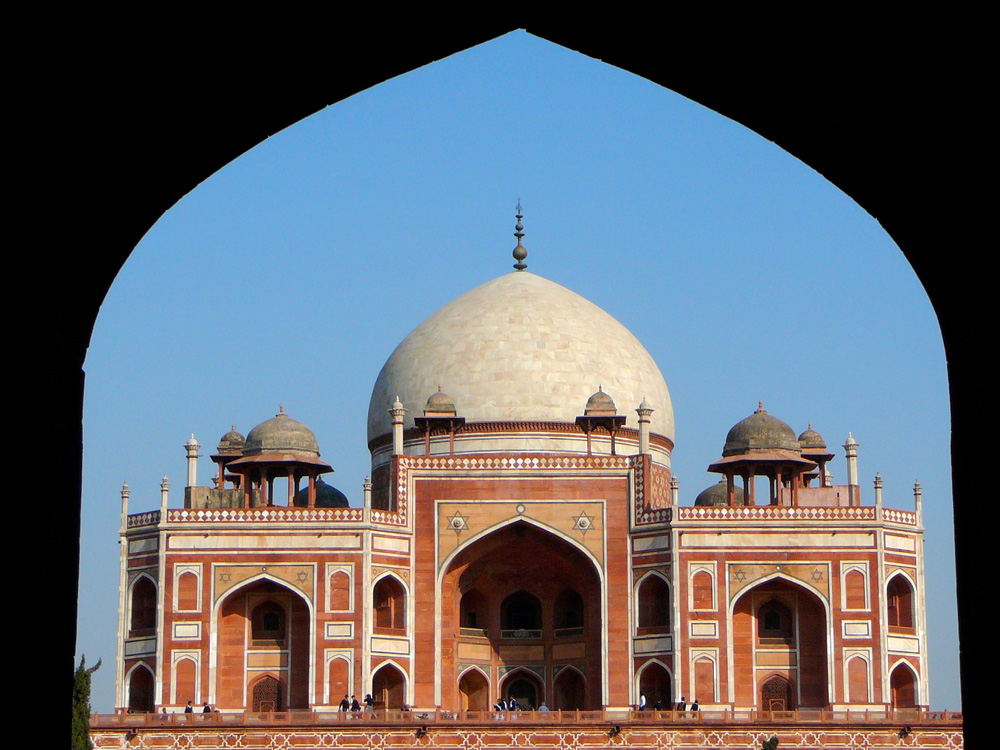Destination: Delhi
By Hend Seif El Din
An invigorating cocktail for travelers, Delhi is a cosmopolitan city that connects two very different worlds. Old Delhi, once the capital of Islamic India, is a labyrinth of narrow lanes lined with incredibly impressive mosques. New Delhi, on the other hand, is truly an imperial city, which was created by the British Raj; spacious avenues and government buildings dominate the scene.
The city is laced with shimmering gems, enticing ancient monuments, art galleries, impressive museums, numerous architectural wonders, a vibrant art scene, bustling markets, and glorious gourmet spots.
This multidimensional metropolis is truly a must-visit destination. But before you go, first thing’s first; you need to look for a place to stay. For luxury and comfort, stay at The Imperial New Delhi, The Park New Delhi, The Hilton Garden Inn, or The Crowne Plaza.
 If you’re looking for a more spiritual, soul-searching–and truly enlightening–place to stay, consider staying at an ashram, or hermitage. For those of you who’ve read Eat, Pray, Love by Elizabeth Gilbert, you’ll remember how vividly she wrote about her fulfilling experience. Some of the ashrams in the area include the Urban Ashram, in the South of Delhi, the Sri Aurobindo Ashram, and the Sant Shri Ashramji Ashram. While some of them don’t require reservations, I would suggest calling in advance, just in case.
If you’re looking for a more spiritual, soul-searching–and truly enlightening–place to stay, consider staying at an ashram, or hermitage. For those of you who’ve read Eat, Pray, Love by Elizabeth Gilbert, you’ll remember how vividly she wrote about her fulfilling experience. Some of the ashrams in the area include the Urban Ashram, in the South of Delhi, the Sri Aurobindo Ashram, and the Sant Shri Ashramji Ashram. While some of them don’t require reservations, I would suggest calling in advance, just in case.
Other than indulging in their local cuisine…savoring their one-of-a-kind spices and traditional dishes, there really is a lot to see in Delhi.
Laxminarayan Temple
Also known as Birle Mandir, this Hindu temple was inaugurated by Mahatma Gandhi, and is dedicated to Vishnu, the Supreme Being. The side temples of the Birla Mandir are dedicated to three other deities: Shiva, the Transformer, Krishna, the eighth incarnation of Vishnu, and Siddhartha Gautama, also known as the Buddha.
Qutub Minar
The tallest in India, Qutub Minar is originally an ancient Islamic monument. Construction on this UNESCO world heritage site started in 1192. The monument itself is made out of sandstone, and is covered with verses from the Qur’an, laced with complex carvings.
Lotus Temple
The Baha’i house of worship got its name from its flower-like-shape. Completed in 1986, the temple earned itself a plethora of architectural awards.
Gandhi Smriti
Previously known as Birla House, it is now a museum dedicated to Mahatma Gandhi. The Gandhi Smriti is located where Gandhi spent the last days of his life, and was later assassinated.
Humayun’s Tomb
The tomb of the Mughal emperor, Humayun, was commissioned by his first wife, Bega Begum, in 1569, and was designed by the Persian architect, Mirak Mirza Ghiyas. Humayun’s Tomb marked the first of its kind, due to it being a garden tomb. Furthermore, it was the first structure to use red sandstone on a large scale.
Swaminarayan Akshardam
Definitely a unique Hindu temple complex, it displays centuries of Hindu and Indian culture, architecture, and spirituality. The building was inspired–and developed–by Pramukh Swami Maharaj, the spiritual leader of the Bochasanwasi Shri Akshar Purushottam Swaminarayan Sanstha, whose volunteers helped 7,000 artisans construct it.
Jama Masjid
Commissioned by the Mughal Emperor Shah Jahan, this mosque is the largest one in India, and is also the main mosque of Delhi; its courtyard can hold up to 25,000 worshippers.
Lodi Tomb
The tomb of Mohammed Shah, the last ruler of the Sayyid Dynasty, is characterized by the octagonal shape of its chamber, as well as by its stone chhajjas on the roof and guldastas on the corners.

India Gate
The national monument of India was designed by Sir Edwin Lutyens. Following the independence of the country, the gate became the site of the Indian army’s tomb of the unknown soldier, known as Amar Jawan Jyoti, or the flame of the immortal soldier.
Red Fort
This 17th Century fort complex was constructed by the Mughal Emperor, Shah Jahan. The fort was a palace for the emperor’s new capital, Shahjahanabad. Construction began in 1638 and continued till 1648.
Archaeological Museum
Located inside the Red Fort, the museums displays a plethora of items, ranging from paintings, to textiles and everything in between. Numerous items date back to the Mughal period.



